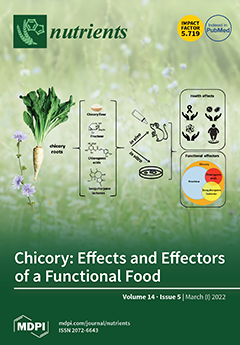Oxidative stress induces functional changes in arteries. Therefore, the effect of
myo-inositol, a possible anti-inflammatory/antioxidant agent was studied on human plasma and rat thoracic arteries. Aortic rings from male Wistar rats (3 months of age) were incubated with
myo-inositol (1, 10 and 100 μM, 120 min) and analyzed using the gas chromatography (GC) method. In another experiment, aortic rings were protected first with
myo-inositol (1 µM, 60 min) and then subjected to a thromboxane receptor agonist (U-46619, 0.1 nM, 60 min). Therefore, these four groups under the following conditions were studied: (i) the control in the vehicle; (ii)
myo-inositol; (iii) the vehicle plus U-46619; (iv)
myo-inositol plus U-46619. The hemostatic parameters of human plasma and an H
2O
2/Fe
2+ challenge for lipid and protein peroxidation were also performed.
Myo-inositol was not absorbed into the pre-incubated aortic rings as measured by the GC method (0.040 µg/mg,
p ≥ 0.8688). The effect of
myo-inositol was more significant in the impaired arteries due to U-46619 incubation, which resulted in an improved response to acetylcholine (% Emax: 58.47 vs. 86.69), sodium nitroprusside (logEC
50: −7.478 vs. −8.076), CORM-2 (% Emax: 44.08 vs. 83.29), pinacidil (logEC
50: −6.489 vs. −6.988) and noradrenaline (logEC
50: −7.264 vs. −6.525). This was most likely a possible response to increased nitric oxide release (×2.6-fold,
p < 0001), and decreased hydrogen peroxide production (×0.7-fold,
p = 0.0012). KCl-induced membrane depolarization was not modified (
p ≥ 0.4768). Both the plasma protein carbonylation (×0.7-fold,
p = 0.0006), and the level of thiol groups (×3.2-fold,
p = 0.0462) were also improved, which was not significant for TBARS (×0.8-fold,
p = 0.0872). The hemostatic parameters were also not modified (
p ≥ 0.8171). A protective effect of
myo-inositol was demonstrated against prooxidant damage to human plasma and rat thoracic arteries, suggesting a strong role of this nutraceutical agent on vasculature which may be of benefit against harmful environmental effects.
Full article






